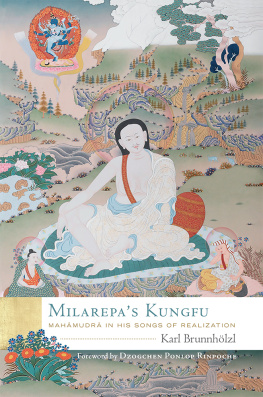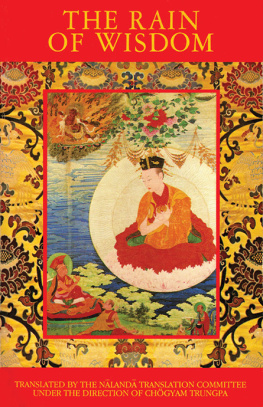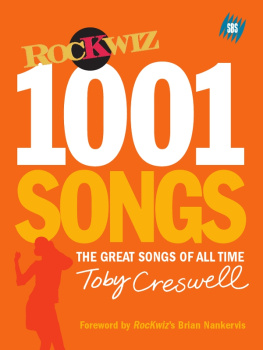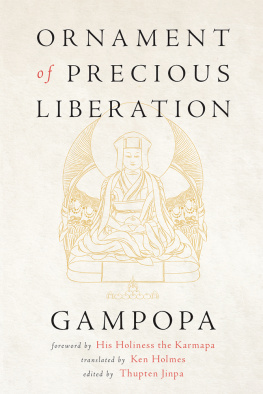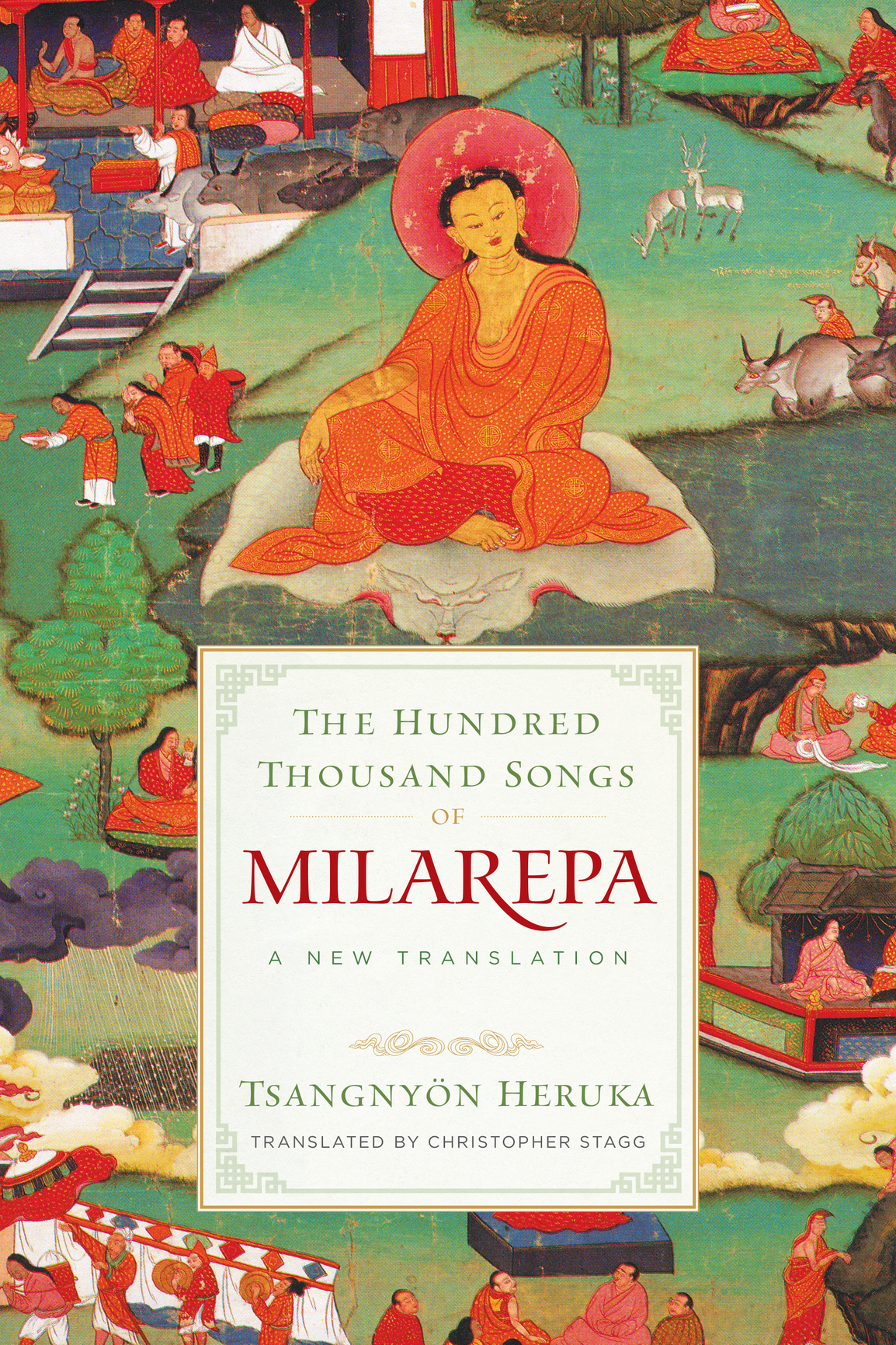Shambhala Publications, Inc. 4720 Walnut St. Boulder, Colorado 80301 www.shambhala.com 2017 by Dzogchen Ponlop Rinpoche and Christopher Stagg All rights reserved. No part of this book may be reproduced in any form or by any means, electronic or mechanical, including photocopying, recording, or by any information storage and retrieval system, without permission in writing from the publisher. eBook design adapted from printed book design by Gopa & Ted2, Inc. angka painting, Eastern Tibet, 19th century, object number IId 13767, Essen collection; Photographer: Hans Meyer-Veden, 1989 IId 13767; Museum der Kulturen Basel, Switzerland, all rights reserved. angka painting, Eastern Tibet, 19th century, object number IId 13767, Essen collection; Photographer: Hans Meyer-Veden, 1989 IId 13767; Museum der Kulturen Basel, Switzerland, all rights reserved.
Cover design by Gopa & Ted2, Inc. Library of Congress Cataloging-in-Publication Data Names: Mi-la-ras-pa, 10401123, author. | Gtsa-smyon He-ru-ka, 14521507, editor. | Stagg, Christopher, translator. | Dzogchen Ponlop, Rinpoche, 1965 Title: The hundred thousand songs of Milarepa: a new translation / Tsangnyn Heruka; under the guidance of Dzogchen Ponlop Rinpoche, translated by Christopher Stagg of the Nitartha Translation Network. | Boulder: Shambhala, 2017. | Includes bibliographical references and index. | Includes bibliographical references and index.
Identifiers: LCCN 2016015581 | ISBN 9781559394482 (pbk.: alk. paper) eISBN9780834840508 Subjects: LCSH: Mi-la-ras-pa, 10401123. | LamasTibet RegionBiographyEarly works to 1800. | Spiritual lifeBuddhismEarly works to 1800. Classification: LCC BQ7950.M557 A3 2016 | DDC 294.3/923092 [B] dc23 LC record available at https://lccn.loc.gov/2016015581 v4.1 a To all my mother sentient beings,In particular, my mother in this life, Rita Stagg.
Contents
List of Abbreviations
| Persons consulted: |
| KTGR | Khenpo Tsultrim Gyamtso Rinpoche |
| DPR | Dzogchen Ponlop Rinpoche |
| KSP | Khenpo Sherap Phuntsok |
| AKW | Acharya Kelsang Wangdi |
| ATW | Acharya Tashi Wangchuk |
| TN | Tenzin Namdak |
| Textual sources: |
| BCC | Twelve Great Sons (Bu chen bcu gnyis) |
| DK | Great White Conch Dictionary (Dung dkar tshig mdzod chen mo), Tibetan dictionary of Buddhist terms (Blo bzang phrin las 2002) |
| DN | The Black Treasury (mDzod nag ma) of the Third Karmapa Rangjung Dorje, Complete Works edition (Rang byung rdo rje 2006) |
| DN-S | The Black Treasury, Sichuan edition (Rang byung rdo rje 2008) |
| DSD | New Revised [Tibetan] Dictionary (Dag yig gsar bsgrigs) |
| DSM | The Golden Mirror of Decoding (brDa dkrol gser gyi me long), Tibetan dictionary of archaic terms (Tshul khrims 1997) |
| JV | Jim Valby in THL Tibetan to English Translation Tool |
| RY | Rangjung Yeshe in THL Tibetan to English Translation Tool |
| TDC | The Great Tibetan-Chinese Dictionary (Bod rgya tshig mdzod chen mo; Zhang et al. 1993) |
| TNH | Tsangnyn Herukas version of Milarepas Life and Songs (bTsang smyon he ruka 1999) |
| Other abbreviations: |
| S: | Sanskrit |
| T: | Tibetan |
Foreword by the Seventeenth Karmapa
The great Tibetan yogi Jetsun Milarepa is revered by all Tibetans, but he is of immense importance for the Kagyu school in particular.
He serves as the bridge between the Indian traditions he received through his teacher, the great Marpa Lotsawa, and the Jetsuns own student, Lord Gampopa. the wellspring of the Dakpo Kagyu lineage. Lord Milarepas Hundred Thousand Songs is considered to be the finest example of gursongs of spiritual realizationand was composed in the original Tibetan poetic style. When we read this book, it would be wrong to regard it merely as literature or as an interesting text of historical value. We should, instead, consider how we can learn from his example and emulate his qualities in our own lives and practice. Jetsun Milarepa was an ordinary human being with many faults who, having committed grave misdeeds that included the murder of more than thirty people, turned to the dharma.
Then, through unwavering devotion to his teacher, single-pointed focus, enthusiastic effort, and limitless patience, he was able to attain the supreme goal of buddhahood in one lifetime. We, in contrast, are generally half-hearted in our pursuit of enlightenment. We are easily distracted and preoccupied with the eight worldly dharmas. Though we go through the motions of refuge, rituals, prostrations, and so forth, we often lack commitment and the steadfast devotion which Milarepa embodied. Until now, English readers wishing to read this fundamental text have relied on Garma C. C.
Changs translation, an excellent work by a devout Buddhist who was also a traveler, scholar, and linguist. However, that work was produced more than sixty-five years ago. I welcome this new translation. It incorporates some amendments and corrections and, in lively modern English, tries to capture the vivid vernacular of the original Tibetan. I pray that all who read this book may benefit and be truly inspired by Jetsun Milarepas extraordinary life and profound realizations. Seventeenth Karmapa, Ogyen Trinley Dorje Dharamsala, India January 4, 2017
Foreword by Dzogchen Ponlop Rinpoche
With tales of betrayal, magic, revenge, and redemption, the life story of Milarepa and his
Hundred Thousand Songs illustrates one mans tireless quest for awakening in the face of tremendous difficulties.
This text is more than the story of Tibets greatest yogi, it is a vibrant source of inspiration, blessings, and a guiding example for all who seek enlightenment in this lifetime. In his twilight years, Milarepas twelve spiritual sons led by Bodhi Raja and Repa Shiwa , made efforts gathering and putting together his scattered dohassongs of spiritual realizationfrom his students personal accounts. It is said that they presented these to Milarepa who then gave his final blessings and made an aspiration that these would benefit all who encounter them. This compilation by his own students seems to be the first written collection of Milarepas songs and life story. Since then, there have been numerous life stories and collections of songs written and compiled by many great masters, among which one of the most extensive and comprehensive is the Dznakma, the Treasure House, compiled by the Third Karmapa Rangjung Dorje. This is the basis for the most popular collection known as the Hundred Thousand Songs of Milarepa, compiled by Tsangnyn Heruka 366 years after the parinirvana of Milarepa.
Nevertheless, the Treasure House and the Hundred Thousand Songs of Milarepa remain true to the earliest known collections. The first complete English translation of Tsangnyn Herukas




